How to grow peas
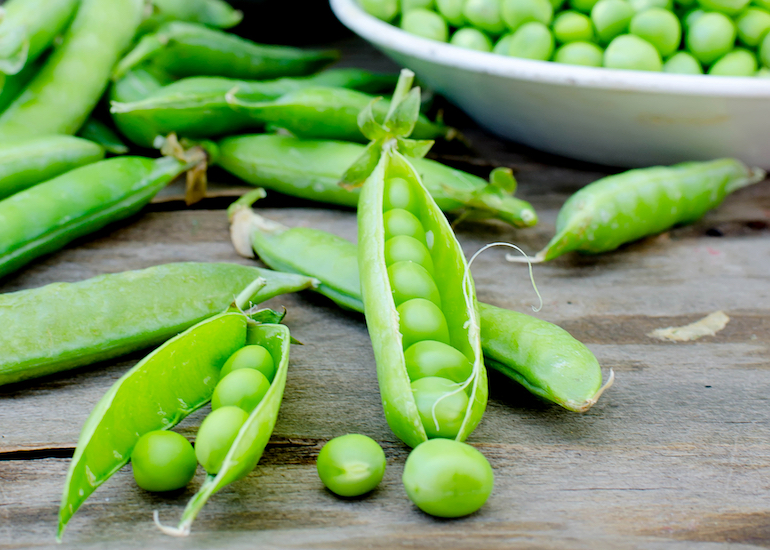
Peas are easy to grow from seed or garden ready plants in your garden or allotment
Image: Pea 'Ambassador' from Thompson & Morgan
Freshly harvested peas are delicious and easy to grow yourself. Grow a shelling variety for traditional, fat, round, garden peas, or try an edible pod like sugar snaps or mangetout. Peas thrive in a cool climate, so are perfectly suited to growing outdoors in the UK. What’s more, you can sow your own pea & bean seeds or buy them as garden-ready pea & bean plants if you’re looking for a quick shortcut to healthy homegrown veg. Here’s how to grow your own nutritious crop of peas this summer.
What are the best types of peas to grow?
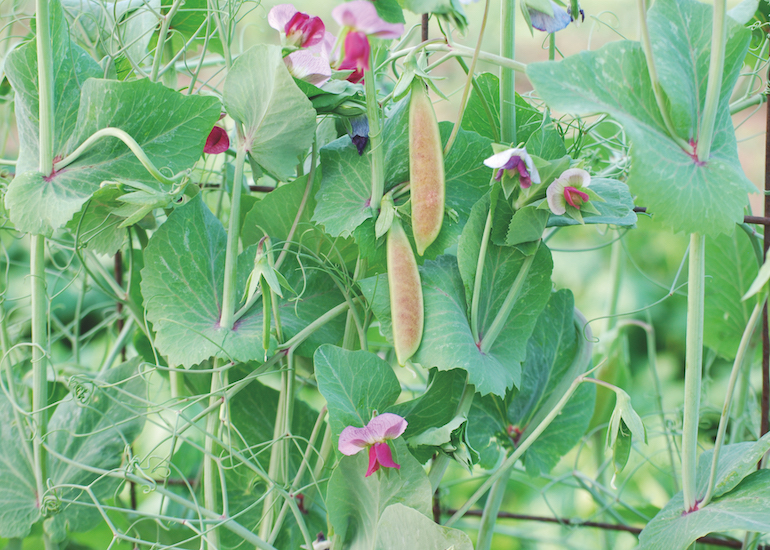
Pea 'Spring Blush' produces beautiful bicolour flowers and tasty pods
Image: Pea 'Spring Blush' from Thompson & Morgan
Shelling varieties produce large, sweet and juicy peas that need to be removed from their pod to eat. They can be sown from early spring and are split into two main groups: early varieties and maincrop varieties. First early varieties like pea ‘Meteor’ produce a crop just 12 weeks after sowing. Second early peas like pea ‘Jaguar’ and early maincrop pea ‘Bingo’ can be sown from March and will start to crop from June. Maincrop shelling varieties like pea ‘Jumbo’ and pea ‘Boogie’ crop throughout the summer from June to September.
If you want to grow mangetout that can be eaten whole, try sowing pea ‘Snow Wind’ for a high yield of crisp, straight, dark green, flat pods right through to October. Want to add a bit of colour to your stir fries? Mangetout pea ‘Shiraz’ grows deep purple pods that are packed with healthy antioxidants, while pea ‘Golden Sweet’ produces golden yellow pods that are equally delicious raw or cooked.
A good source of vitamin C and manganese, sugar snap peas can also be eaten whole and taste great raw or cooked. They make a fun addition to children’s lunchboxes and provide a quick and healthy snack straight from the plant. Try pea ‘Purple Magnolia’ to enjoy the world's first deep magenta sugar snap peas or grow the pretty pea ‘Spring Blush’ as an ornamental edible in your flower border.
Can I grow peas without a garden?
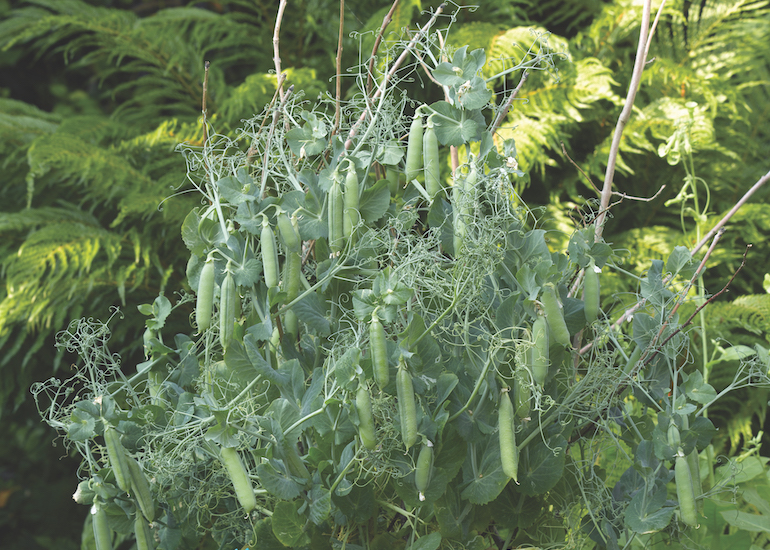
You can grow compact varieties like pea 'Bingo' in containers
Image: Pea 'Bingo' from Thompson & Morgan
Even if you have limited space, you can still grow peas in containers, grow bags or a special vegtrug on a balcony or by the kitchen door. Choose a compact variety like pea 'Bingo' that won’t need too much support.
And don’t worry if your sowing space is limited. Simply buy a few garden ready plants. Shelling pea ‘Buddy’, mangetout ‘Delikata’ and sugar snap ‘Zuccola’ can all be ordered in 9cm pots ready to transfer straight into containers on the patio.
How to sow pea seeds
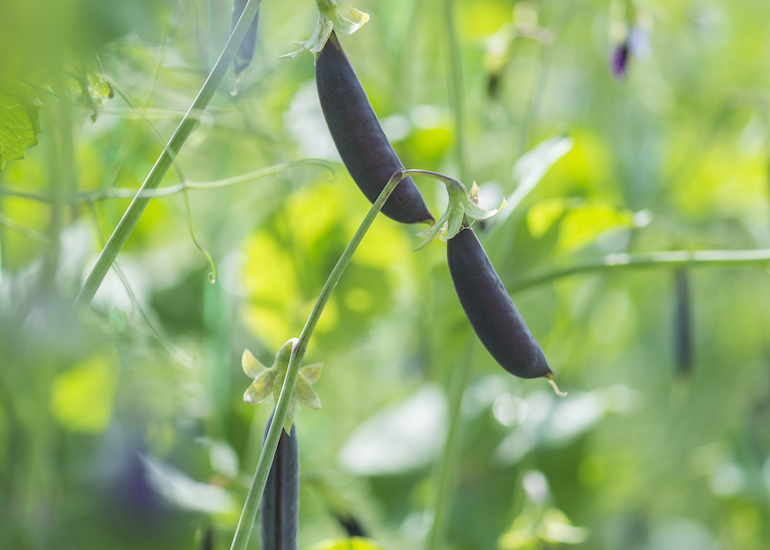
Grow the world's first purple sugar snap pea
Image: Pea 'Purple Magnolia' from Thompson & Morgan
Pea seeds can be sown directly into the soil outdoors from February through to June. If the weather is unseasonably cold, start your peas off in a greenhouse or on a sunny windowsill, and transfer your seedlings into the garden when temperatures rise. Alternatively, warm up your garden soil to a perfect 10 degrees using a cloche. Sow seed every 10-14 days from March onwards to produce a continuous crop throughout the summer.
- Improve your soil by digging in well rotted manure or compost.
- Choose a sunny spot with well drained soil
- Dig a wide trench, roughly 4cm deep
- Water the trench before sowing to stimulate quick germination
- Place seeds in the trench 5cm apart, in two parallel rows
- Try to keep the rows of seed 15cm apart to give your plants room to grow later on
- Cover the seed with soil and water in well
- When your seedlings are about 4 inches high, add short twiggy sticks or netting to give your growing peas something to climb up
- Mulch around the base of your peas to ensure they don’t dry out
When are my peas ready to harvest?
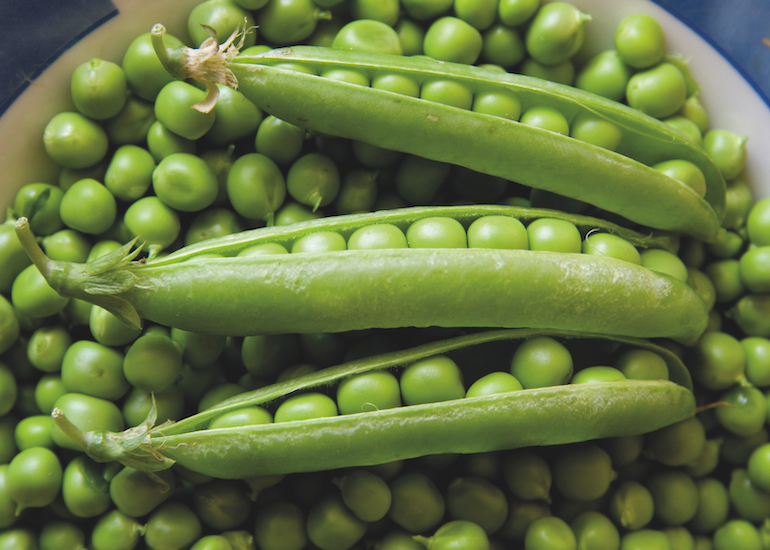
Shelling varieties are ready to harvest when the pods are swollen with peas
Image: Pea 'Rondo' from Thompson & Morgan
Peas are ready to harvest about 11 to 15 weeks after sowing. You’ll know that your shelling varieties are ready to pick once the pods are swollen with peas. Mangetouts are best picked while the young pods are still completely flat while sugar snaps should be harvested when the pods are semi-mature and just beginning to swell.
Pick your peas every day to encourage your plants to keep producing more, and to avoid tough pods developing. Harvest pods from the bottom of the plant up and freeze any surplus to enjoy later in the year.
Should I feed my peas?
Peas are legumes and naturally fix their own nitrogen, so adding nitrogen-rich feeds may encourage lots of bushy green growth but reduce the production of peas. If your veg plants are grown in good, fertile soil with plenty of organic matter they won’t need any extra feeding.
At the end of the season, leave the roots of your spent pea plants in the bed. This will allow all the nitrogen stored in the roots to stay in the soil. Grow hungry plants like brassicas in this space next year, as they will really appreciate the nitrogen boost.
What's gone wrong with my pea plants?
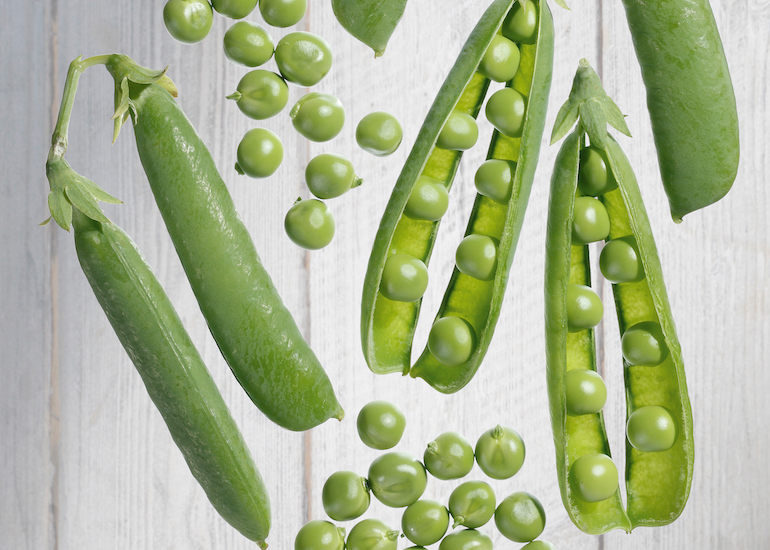
Nothing beats the flavour of freshly harvested home grown peas
Image: Pea 'Buddy' from Thompson & Morgan
Mice love to dig up and eat pea seeds planted outside in the garden. You can set traps, or just sow your seeds in modular trays indoors to allow them to develop safely before planting out.
Half eaten pea pods? This could be the work of the pea moth caterpillar, indicating an infestation during flowering. Use insect-proof mesh during the flowering period or sow early and late peas, which flower outside the pea moths’ flying period.
If wood pigeons are a nuisance, protect your young peas with netting or hang scaring devices such as jangly keys or cds.
Occasionally, powdery mildew can develop on the surface of pea leaves. Reduce the likelihood of mildew by keeping the soil moist and reducing the air temperature around your plants. Giving your plants plenty of space for air to circulate will also help to prevent this problem.
Quick guide to growing peas
- Direct sow pea seeds outside in the garden between February and June.
- Choose from shelling, mangetout or sugar snap varieties.
- Make sure you support developing pea plants with netting or sticks.
- Harvest peas 11-15 weeks after sowing.
- Don’t feed your pea plants, just incorporate plenty of organic matter into the soil before planting.
- Harvest your peas every day to encourage more pod production.
Peas are a delicious and easy crop, so we hope you’ve found everything you need here to grow your own. Share your pea growing journey with us via social media using the #YourTMGarden on Instagram to keep us up to date. We love to see your photos! For more top tips on how to grow peas, and beans too, head to our pea and bean hub page.
Sign Up For Exclusive Special Offers




© 2024 Thompson & Morgan. All rights reserved. A division of Branded Garden Products Limited.
Sign up for exclusive offers!



